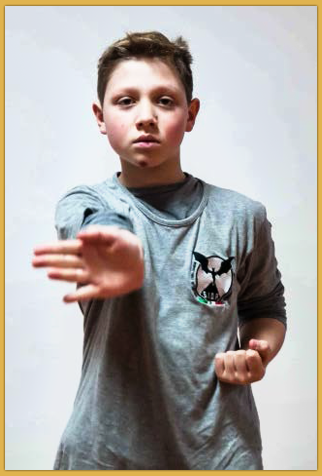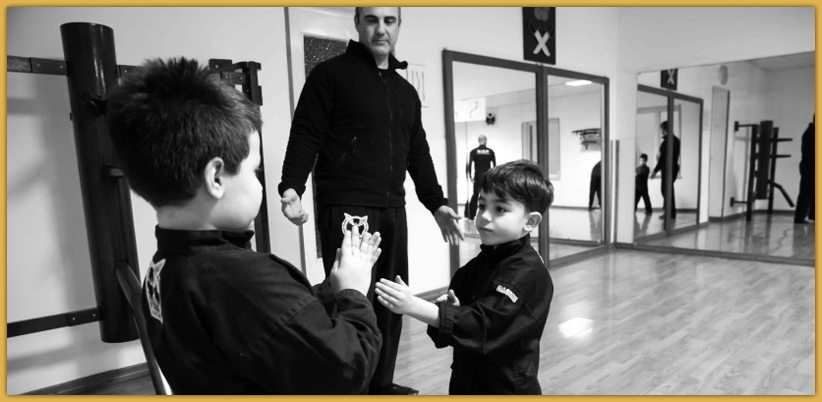PREMISE
As any School, S.I.D.P is extremely sensitive to issues concerning the development of the individual in all its complexity, with specific regard to the difficulties that might heavily affect the growth of children and teenagers.
This vision has resulted in the creation of the project “Don’t Fight the Bully. Defeat Bullying”, proposed to Middle and High Schools: it is centred on a problem which is nowadays of undeniable importance and manifests itself in many different forms.
The distinctive elements of the phenomenon of bullying are described in the “Introduction”; whereas the sections entitled “Objective”, “Methods” and “Programme” are devoted to outline the aims and methods proposed by S.I.D.P. in order to prevent it, rather than fight it.
The S.I.D.P. Staff, supported by social workers, is pleased to be at the complete disposal of Head Teachers, Professors and Parents for additional information.
INTRODUCTION
The so-called “bullying” has recently been given increasing attention by scholastic institutions, due to the growing frequency of the cases, whether occasional or repeated, relating to this phenomenon, whose complexity and impact on the psychology of students in the age of development are a source of understandable concern.
The term “bullying” refers to the use of “aggressive behaviour” in order to frighten, control or hurt someone else on the basis of a perceived “power imbalance”. Nevertheless, as some authors have pointed out, violence, both for those who bully and who are bullied, is just a part of the issue, which actually needs to be understood as being multidimensional.
Bullying can take a more direct form, covering all those behaviours that can physically cause harm to others (physical violence) as well as an indirect one, consisting of attitudes that are intended to exclude and marginalise others. The episodes of bullying involving sexual or racial violence are also far from negligible.
Moreover, “cyber-bullying” is currently a source of major alarm. This term refers to the most “advanced” kind of bullying, which makes use of technology to insult, abuse and subdue others.
Bullying is generally categorised as a form of aggression, but it actually differs from typical aggressive behaviours because of four basic features that the scientific community employs as main distinguishing criteria:
- Deliberateness of the action;
- Persistence over time;
- Asymmetric relationship;
- Its social nature.
In this despicable game there are major and minor roles.

The role of the bully is played by those who act aggressively. From a psychological standpoint, these individuals are mainly characterised by aggressiveness and hostility towards rules; violence is regarded as something positive and as the only effective means to achieve a certain goal. Besides, there seems to be no true awareness of the violent acts directed at the victim.
What often surprises about the bullies’ attitude is that their hostility is addressed not only towards their schoolmates but also towards teachers and adults in general.
By exploring the mechanisms underlying the bullies’ behaviour in more depth, it has become clear that they have high self-esteem and they are unable to recognise feelings such as empathy and happiness. Besides, they have developed dysfunctional relationship patterns as well as violent ways of handling their interpersonal relations and their connections with the group of peers. Acting as a bully can have long-term consequences: as a matter of fact, longitudinal studies have shown that teenagers’ externalizing and antisocial behaviours can tend towards depression and alterations of their psychological condition, potentially leading to antisocial personality disorder.
Various types of bullies have been identified (“dominant”, “anxious”, “gregarious”): the differences range from being completely hostile towards adults to the possibility of being restrained by the words of an adult seen as a point of reference and, finally, to the continuous quest for the approval of the group.
The other main role is the one played by the victim: that is to say, the person suffering the violent actions perpetrated by the bully or the group of bullies, who is generally characterised by being really shy, introverted, unsociable and by having very low self-esteem and self-awareness. Due to these personal traits, they tend to remain on the side-lines and they usually don’t have many friends. They lack the means to face up to the bully’s behaviour and, very often, they even find it difficult to tell the people they trust about the abuses they have suffered.
Even the role of the victim seems to be linked to a certain kind of detrimental attachment to the reference figure and it is characterized by anxiety and overprotectiveness. The bullies, as mentioned above, are unable to internalize emotional states, as for instance empathy; whereas the victims don’t recognize anger, which makes it really difficult for them to build up a protective shell and can even lead to the firm belief that they actually deserve the violence they have suffered.
However, we should differentiate the “passive victim” from the “provocative victim”, which has been recently described, and whose characteristics are situated half-way between those of the bully, such as the aggressive attitude and even, sometimes, the use of violence, and those of the passive victim, such as the inability to face the bullies and to set up a suitable defence system against them. The only result is therefore to provoke the bully and trigger off violent actions.
The typical psychological profile of the victims is defined by internalizing behaviour, which in the long term, throughout life, can result in episodes of depression and even self-harm.
Among the secondary actors, there are the supporters of the bullies, who could be considered as their counterparts, or their public, and who usually stand aside from the major events, and the defenders of the victims, schoolmates who openly and unquestionably side with them.

The social nature of bullying represents an important precondition in order to understand and prevent this problem. The harmful acts against someone regarded as inferior are usually carried out within the group, among people who often encourage this kind of actions. Playing specific roles that remain unchanged in the group leads to emphasizing this phenomenon even more, since social influence often presses people into doing what the others expect of them, especially when they don’t have the means to deal with the situation and change it.
It is therefore clear that friendship plays an important part, mainly during preadolescence and adolescence, which is when bullying develops the most. Friendship represents for teenagers the arena where they define themselves, they take on new challenges, starting to get more involved in life, and they try to build up their own image and their inner self in order to then be able, as adults, to face the world. This is the space of redefinitions, the opportunity to give new meaning to their own attitudes and to those of others.
Furthermore, this support system gives them strength and prevents them from feeling alone whenever aggressive acts occur, making it easier to report them and to seek help. On the other hand, however, friendship can have a reinforcing effect on bullies, who will feel backed up by their friends. Finally, friendship can even end up leading young people astray: keeping bad company could stir up violent attitudes and foster bullying.
Among the causes and the triggering factors of bullying, there is a wide range of elements that are generally divided into different categories:
- Family background: a dysfunctional home environment, marked by detrimental modes of communication, financial difficulties, relational problems etc., can represent for kids who are unable to channel emotional distress and aggressiveness the drive to play the role of the bully.
- Cultural background: the loss of values that characterizes our times can only strengthen the habit of resorting to attitudes based on the use of violence as a means to gain the approval of the group.
- Personal factors: this category comprises all those psychological features that describe a certain personality as being more inclined towards the role of the bully or of the victim.
- Day-to-day life: the places where the kids generally hang out, the school environment, the kind of friendships etc. also matter a lot in this regard.
Then, how can we effectively defeat bullying? First of all, we need to work on the three-dimensional nature of this phenomenon, with a view to both the victim and the bully. Specifically, our action should be structured into three different levels:
- Individual level;
- School environment;
- Family environment.
Any kind of involvement in this matter needs to engage all the institutions that can help the kids and their parents become more aware of this serious issue: actually, quite often, most people barely do anything about it since they consider this issue to be far-off from them.
We need to work on creating values and on learning to respect the rules of the group of peers. We can’t simply try to fix situations that have already been affected by bullying.
OBJECTIVE
The main objective of this project is therefore the prevention of bullying: the goal is not to practice martial arts in order to gain physical strength and “pay the bullies back in their own coin”, but to acquire the necessary self-confidence and internal stability so as to be able to avoid abuses, consequently getting free from the psychological role of the “prey”.
Martial arts are thereby a means to defeat bullying as a whole, not each and every bully individually.
Our aim is certainly not to create fighters or warriors, but to enhance the students’ physical and mental abilities, to raise awareness about the dangers that surround them and to transmit useful knowledge that might turn out to be vital in dangerous situations while, at the same time, promoting values such as respect for oneself and for others, courage and humbleness.
The main goal is to promote the psychophysical well-being of students, thanks to hopeful and sensitive adults as teachers and role models, and to support a process of personal growth aiming at consolidating the capacity to effectively control aggressiveness, both at an individual level and within a group. By learning the basic principles of Self-Defence, our students will increase their confidence, thereby minimizing the feeling of vulnerability, with a beneficial effect on their own self-esteem. Moreover, they are encouraged to develop their positive traits and abilities, in order to establish healthy relationships with their peers.
A training course of this sort, which we like to consider as a proper “Martial Way”, turns out to be of the greatest value especially to those who reveal the typical features of the potential “bullies” as well as to those who have already proven to be as such: the aggressiveness, the strength and the energy that are usually employed in a distorted and inappropriate way can be channelled towards a much more profitable use, through a specific training that allows to make the most of these personal traits and to unleash them in a controlled manner, learning how to handle them. All of this needs to be done in a context characterised by clearly defined rules, which brings out the value of cooperation along with collective and shared growth.
Silvia Luongo, Social Worker
METHODS
S.I.D.P. makes every effort to carry out the Project-related activities in close cooperation with educational institutions. This way of operating is consistent with the School’s intention to play, through its work, a useful role for the society we live in and specifically for young people, that is, those who will hopefully lead us towards a better society.
The programme includes a series of 10 lessons, divided in:
- 1 theory class;
- 8 practical classes;
- 1 final class.
They will be held during the school hours or at the most suitable time depending on the organization of the lesson plan.
Each class will last about one hour and a half, with the exception of the final one, which will be a two-hour lesson.
During the first lesson, there will be a meeting with the Social Worker, who will explain to the students what bullying really is, who is involved in this phenomenon and how this problem is actually closer to us than we may think.
Most of the activities are designed to be carried out in an interactive way: not only will they include a slide presentation, but they will also be based on the active involvement of kids, by means of brainstorming sessions, role-playing games and the possibility of taking part in debates. Moreover, students will be able to watch the 25 – minute short film “The Big Match – Bullying”, directed by Gabriele Martino and Daniele Ferruzzi: it deals with the issues of bullying as well as cyber-bullying and it is set in some schools of the area of the Roman Castles, which makes it very close to the students’ sensibilities, precisely due to its themes and settings. The practical classes, held by S.I.D.P. teachers, aim to deal with the standpoint of both the victim and the bully, thus giving a new meaning to the stimuli and provocations that the potential bully is led to perceive in a negative way.
Furthermore, particular emphasis will be placed on discipline, on respect for each other and on those fundamental rules, usually provided by reference figures, which kids need while growing up. As concerns the “victim”, the main goal will be to draw attention to everyone’s specific assets, by making it clear that we don’t need muscular strength to be able to react: all we have to do is to uncover our inner resources and to become aware that no-one is entitled to harm us, neither physically nor verbally. Finally, violence will be depicted as the last refuge, the last weapon we can resort to in order to fight against the bully and, anyway, as a failure for whoever attacks or is attacked (violence is always the last refuge of incompetent people).
PROGRAMME
1st lesson – “What is bullying?”: meeting with the Social Worker.
2nd lesson – “Dynamic Sphere and Water Principle”: simple, yet challenging exercises through which students, in pairs and in a playful manner, can learn how to mould their bodies depending on the different external stimuli, without stiffening nor trying to directly confront the attacker’s force.
3rd lesson – “Development of the Dynamic Sphere”: the skills acquired in the previous lesson are analysed in more depth and new elements are added.
4th lesson – “Punch Training”: not only do we teach the technique of different types of punches but, above all, we emphasize how dangerous it can be to underestimate their consequences.
5th lesson – “Training on how to transfer pressure from the outside onto the punch bag”: the aim is to learn how to handle physical pressure and transfer it to a defined target, in a controlled way. This hard work will allow to release any psychophysical tensions in a healthy manner.
6th lesson – “Lap Sao”: this lesson will deal with the tactical applications of traditional techniques, thus increasing self-confidence and stressing the foolishness of unprovoked violence.
7th lesson – “Pak Sao”: this kind of training is similar to the previous lesson, but in a different tactical scenario.
8th lesson – “Lap Sao and Pak Sao”: the topics of the 6th and the 7th lesson are combined, but in this case the exercises should be performed with growing intensity, which will encourage the students training in pairs to cooperate with each other in order to ensure the improvement of both of them. By doing so, growth becomes a shared value.
9th lesson – “Integration of the Lap Sao and Pak Sao exercises with the Dynamic Sphere and basic first aid practices”: this lesson consists of two phases; in the first one all the themes of the course will be summarized in focused exercises, whereas in the second one a S.I.D.P. Teacher with a degree in Nursing Science will explain some useful first aid practices.
10th lesson – “Final exam and greetings”: at the end of the test, the certificates of attendance will be issued. The invitation to join this final lesson is extended to the headmaster, schoolteachers and parents, who will have the opportunity to interact and ask questions to the S.I.D.P. Teachers as well as to the Social Worker.
Yours sincerely,
Master Francesco Procaccini (7th Duan)
S.I.D.P. Technical Manager
Cordiali saluti,
Francesco Procaccini
Maestro 7° duan
Responsabile Tecnico S.I.D.P.


